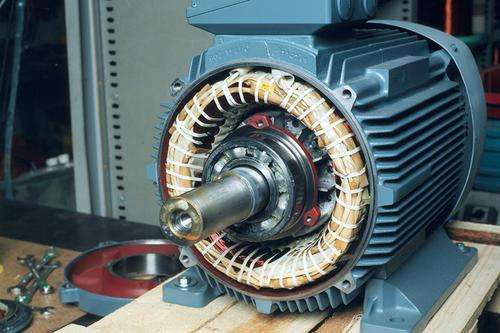Selection principle of motor lubricating oil
The general selection principles of lubricating oil are as follows:
1. Working temperature:
The working temperature will affect the viscosity change and lubrication effect of lubricants. Therefore, when the working temperature is low, the lubricant with low viscosity must be used. When the working temperature is high, lubricants with high viscosity or appropriate additives must be used. The viscosity of the selected lubricant has to be changed at different ambient temperatures. For example, if the same bearing is lubricated, a lubricant with a viscosity lower than that in the South or in summer must be selected in winter. If the operating temperature changes frequently, lubricants with good viscosity temperature characteristics must be used. That is to say, in order to keep the film thickness constant within a certain range, the viscosity of lubricants used together with the increase or decrease of operating temperature must be considered.
2. Movement speed:
The higher the speed, the greater the resistance to movement. In order to avoid generating too much heat, the lubricant with lower viscosity must be selected. On the contrary, in order to improve the bearing capacity at low speed, lubricants with high viscosity must be used.
3. Action characteristics:
The movement has impact, vibration, frequent load, variable speed, starting. Stop, often reverse, back and forth or intermittent movement is not good for the formation of oil film, so high viscosity lubricant must be used. Sometimes, in order to ensure reliable lubrication, we prefer grease, even solid lubricants.
4. Workload:
The greater the load on the rolling bearing, the higher the viscosity of the lubricant. The lubricant must have good meteoric and extreme pressure properties to avoid protruding from the friction pair or direct contact between metals.
Foshan electric machinery wholesale
5. Structural features:
The smaller the radial clearance of rolling bearing is, the higher the machining accuracy of friction surface is, and the lower the viscosity of lubricating oil is.

6. Environmental conditions:
If the bearing works under the conditions of humidity, corrosive gas, low temperature, dust and strong radiation, the lubricant is easy to deteriorate into pollution, and the lubricant with strong water, wear resistance, corrosion resistance, cold resistance and radiation resistance must be selected. In the case of splashing water, emulsion spray, moist air or dust debris, it is generally recommended to use lubricating oil instead of grease.
7. Bearing accuracy:
When the moving friction surface of bearing is rough, the oil with higher viscosity is usually used, which leads to higher local pressure due to poor contact. When the accuracy of moving friction surface is high, lubricant with low viscosity should be used to reduce unnecessary energy consumption loss and temperature rise.
8. Bearing hardness:
When the hardness of the bearing moving friction surface is low, the lubricant with high viscosity must be used, and there must be enough oil. On the contrary, the viscosity of the oil may decrease. In order to give full play to the role of lubricants, it is very important to select suitable lubrication methods and excellent lubricants. When the motor is assembled, the grease injected into the bearing chamber must be clean. If the grease is not clean and adulterated with impurities, especially hard impurities, it will lead to abnormal wear of bearing and easy to cause bearing failure. The charging amount of grease must be appropriate. If too little is added, it will lead to intermittent lack of oil and cause heating, which will lead to bearing failure. If the amount of oil is too much, the heat of grease stirring will cause bearing failure, which will crush and pollute the interior of the motor.
The charging of motor grease must be injected according to the design quantity and reasonably distributed to the bearing cavity space. The bearing cavity space is composed of three parts between the inner bearing shell and the outer bearing cover. The grease on the bearing cavity and the bearing lap surface must be dispersed as far as possible, and the filling space is determined by the speed. During the operation of the motor, the deterioration and loss of grease should be avoided, so as to avoid bearing failure, and the special grease for bearing should be replenished regularly so as to use the oil return pan. It is strictly forbidden to mix different grades of grease to prevent deterioration of Greece and loss of lubrication performance, resulting in bearing failure.
Article source: Foshan motor wholesale http://wotme.com.cn
-
07-06
The difference between reducer and gearbox
Reducer motor mainly refers to the gear motor assembled by gear box and motor. Its main function is to increase the torque and reduce the speed. It is widely used in many factories. It is generally decelerated by means of gearbox. Reducer motor refers to the integration of reducer and motor (motor), which can also be called gear motor or gear motor. It is usually integrated and assembled by a professional reducer manufacturer and integrated with the motor. The reducer motor is a kind of power tr
-
07-06
What is the difference between asynchronous motor and synchronous motor?
The principle of asynchronous and synchronous motors are both based on the law of electromagnetic induction. The difference is that the symmetrical three-phase windings of the asynchronous motor are connected to the AC power supply. Even if the stator does not roll, a rotating magnetic field will occur because of the AC power supply. At this moment, the current will occur in the closed winding circuit. Therefore, according to the left-hand screw rule, the effect of the force on the current carry